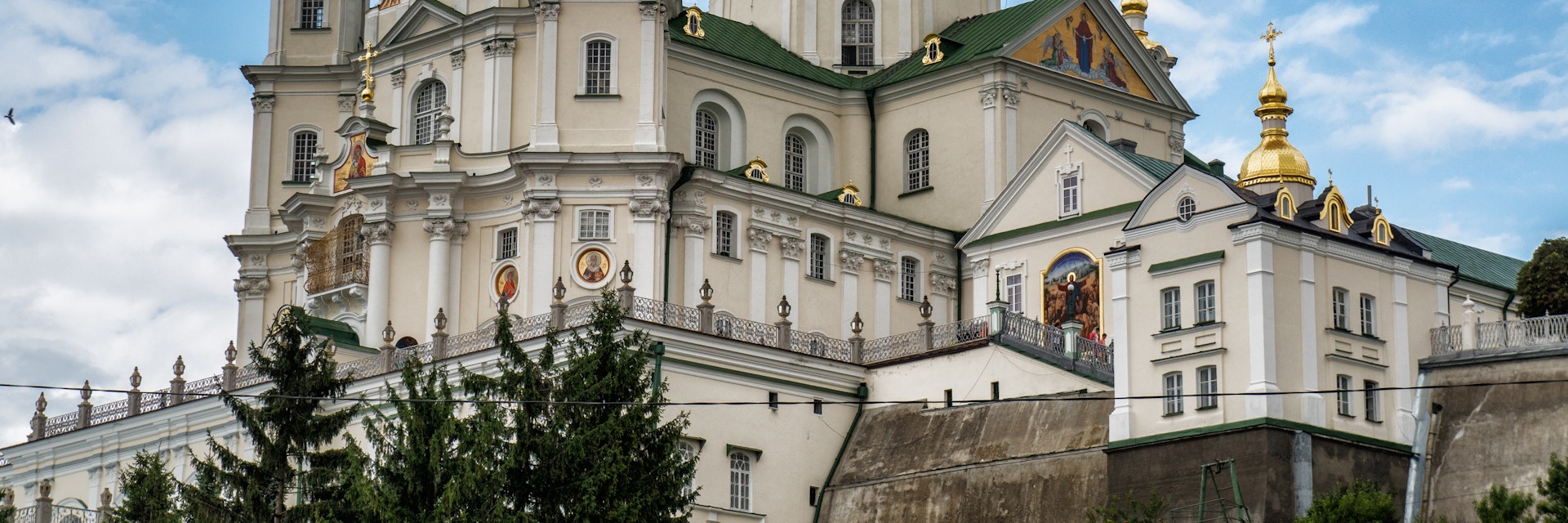Its ornate golden domes rising up from the surrounding plain, Pochayiv Monastery is a beacon of Ukrainian Orthodoxy (Moscow Patriarchate) on the edge of a largely Ukrainian Catholic region. Indeed, it’s the country’s second largest Orthodox complex after Kyiv’s Kyevo-Pecherska Lavra and was founded by monks fleeing that mother ship when the Mongols sacked Kyiv in 1240.
Visitors will find the monastery's ornate golden dome and church interiors beautiful and its mystical aura intriguing. The atmosphere is much more devout than at the lavra (senior monastery) in Kyiv.
Pochayiv is frequently packed, but tourists are still outnumbered by pilgrims visiting the Mother of God icon (1597) or the 'footprint of the Virgin Mary'. The busiest religious festivals are the Feast of the Assumption on 28 August and the Feast of St Iov, a 17th-century Pochayiv abbot and the lavra's most important monk, on 10 September.
Both of the monastery's famous religious relics are found in the baroque Uspensky Cathedral (1771–83), whose entrance is straight ahead and to your left, on the crest of the hill after you enter the main gate. The famed footprint of Mary, reportedly left after the Virgin appeared to a local monk and a shepherd, has a holy spring with purportedly healing waters. The Mother of God icon is imbued with the power to work any miracle. Both are to the right of the central aisle.
The 65m-tall baroque bell tower (1861–71) is worth climbing for the view, if you can sneak in with a tour group or monk. Its central knocker weighs over 315kg.
On the far side of the Uspensky Cathedral is a building with a door leading down to the Cave Church. Pilgrims come here to pay their respects to the relics (ie remains) of St Iov.
Because this is an Orthodox place of worship, men aren't allowed to wear hats or shorts, and women must cover their head, knees and hands (no trousers, shorts or skirts above the knee, but six-inch heels seem to be fine). This applies to the churches and the grounds. Trouser-clad women can borrow a wraparound skirt from the excursion bureau. The souvenir stalls on the way up to the monastery do a roaring trade in headscarves. No photography is allowed anywhere once through the gates, but a snap of the views from the monastery ramparts is possibly worth a ticking-off from a monk.
Tourists almost always visit Pochayiv as a day trip, either from Ternopil, Kremenets, Dubno or even, if they have a car, from Lviv. Little white marshrutky shuttle back and forth almost constantly to and from Kremenets (15uah, 30 minutes), from where you can pick up services on the main Lutsk–Ternopil or Rivne–Ternopil routes. They drop off and then wait to fill up at the bottom of the hill below the monastery.

